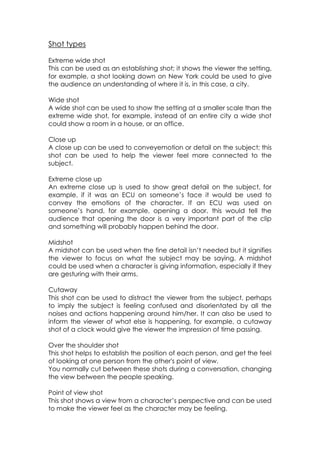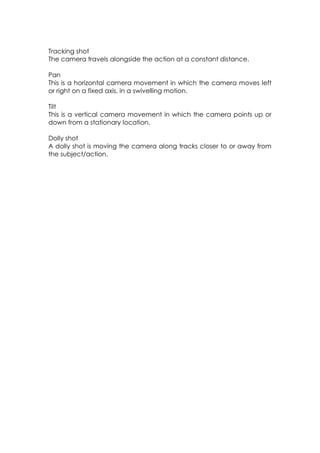The document describes different types of shots that can be used in filmmaking:
- Extreme wide shots show a large setting like an entire city from far away. Wide shots show a setting like a room or office from closer.
- Close ups convey emotion or detail on a subject to connect viewers. Extreme close ups show great detail, like a person's emotions or what their hands are doing.
- Midshots focus viewers on what a subject is saying without needing detail. Cutaways distract from the subject or show what else is happening.
- Over the shoulder shots establish people's positions during conversations. Point of view shots make viewers feel like they have the character's perspective. Tracking and dolly

